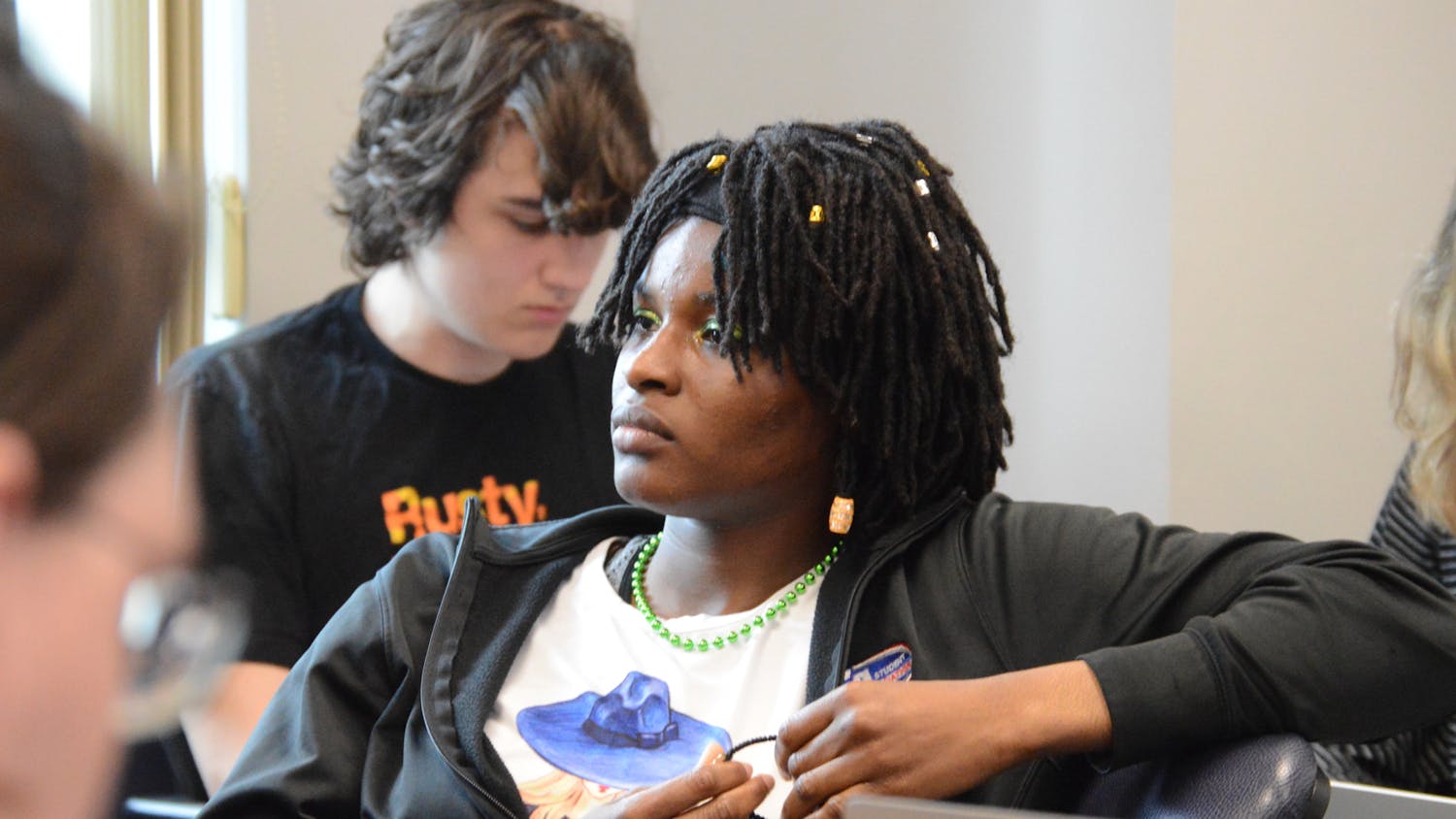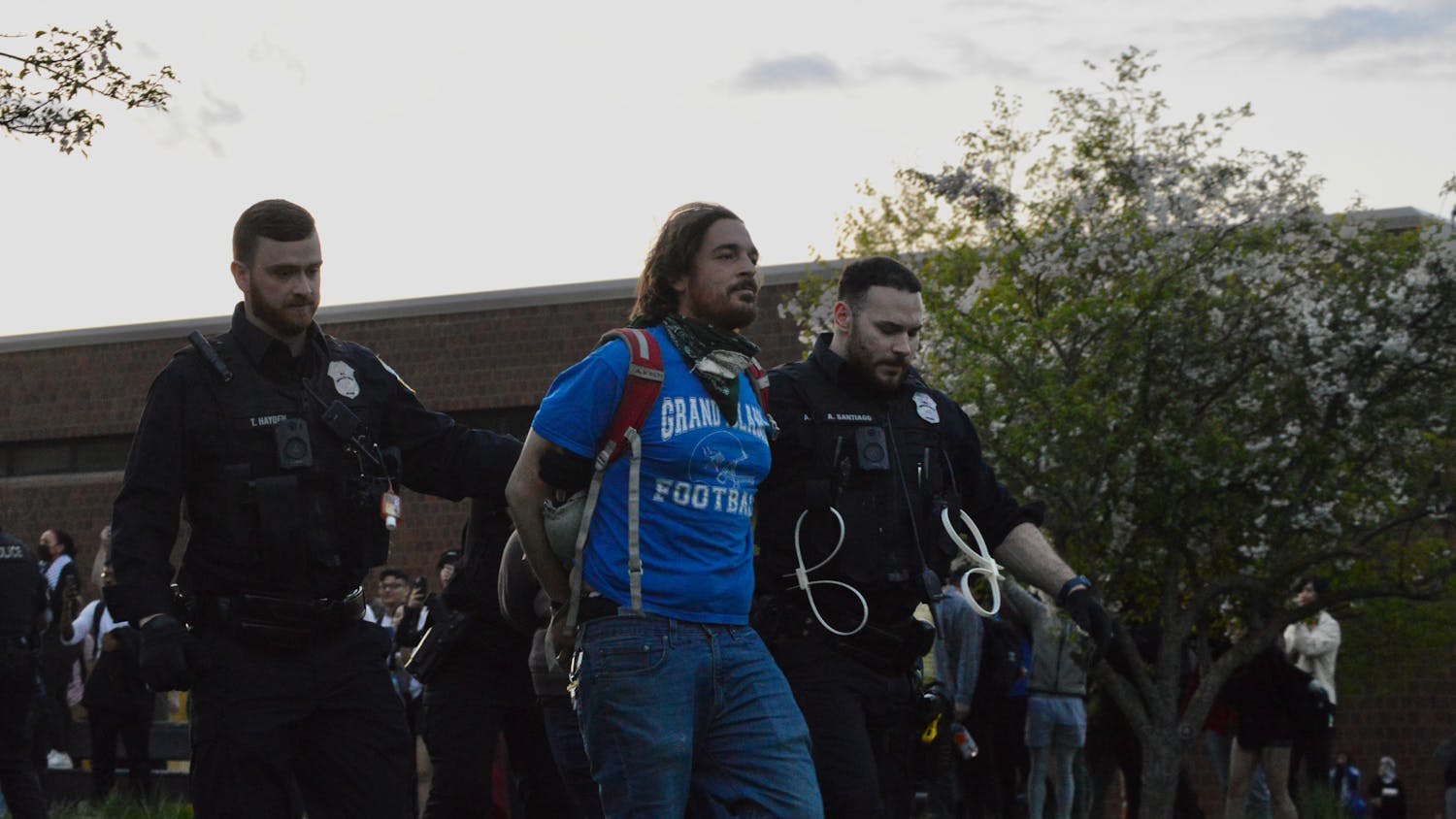Inside the grain elevators, orange wires sling past concrete walls as work lamps cast uneasy shadows across the massive hoppers that extend down from above. Metallic beams reach over and fix themselves above an electrical box that reads "Cross Belt."
Dripping after the day's rain, the sound escalating to the top of the exhausted silos, dragging itself across the 12-story concrete cylinder, bounces in a nearly endless movement of reverberation. Other noises are unable to escape, such as yells, the clack of boots and an uneasy hum that delivers like a two-ton generator.
But these grain silos have been inactive for 50 years.
On Saturday, the sights and sounds of these sleeping giants were resurrected with The Emerging Leaders in the Arts Buffalo's (ELAB) art celebration City of Night. Over a dozen installations, 25 art vendors and 15 cultural artists were featured in the event.
"This is not something that you would normally get to do," said Marcus L. Wise, visual arts coordinator and president of ELAB. "The opportunity to just kind of wander freely through these spaces that are these hulking mammoths that were once the lifeblood of our industry and are now kind of strange creatures that we get to crawl around on the inside of."
The experience certainly varies from formal galleries like the Albright-Knox.
Three buildings in the Old First Ward were opened up for indoor art installments, art booths and multimedia audio-visual performance art: Perot, the Malthouse and Marine-A.
Over 2,500 people were in attendance according to an estimate from Wise.
As people move through the shaded Childs Street toward the silos, a lighthouse is one of the first visible works. Max Bernstein, a 2009 UB alumn in media studies, used a projector and some intricate software to produce this giant lighthouse, which was projected directly onto the Marine-A silos.
This piece, called "Elevators by Night," was an interesting draw for the event and the projector was also used by a separate group to create a mixture of shadow puppetry and dance. Bernstein suggests he shares a common ground with many of his colleagues.
"Like most artists, I have no idea what I'm doing," Bernstein said. "But I have a good deal of stubbornness in my character that keeps me after the aspiration, which most of the time is an impossible thing to hit. I believe strongly in failure as part of my creative process."
Works by several other artists incorporated projectors and light, including a string of LED lights on a shimmering reflective surface, a documentary projected onto a hopper and a considerable number of installation pieces.
One projected film called "Cycle of Life" by Seth Tyler-Black, a 2011 UB alum, contained swirling colors and images reminiscent of a Tom Wolfe novel. Birth, learning, passion, addiction, rebirth and death all encompassed the life cycle. According to Tyler-Black, the film was meant to represent the aesthetic feeling of the struggle and renewal that Buffalo is going through.
"When I initially saw the call for work, they were looking for pieces that symbolize the reemergence of Buffalo as a city of force," Tyler-Black said. "Silo City is jaw-dropping when you first see it, so getting that many people out there has to have made some impact on its future."
The future of Buffalo was clearly considered in the planning of the event. Sustainability was promoted with a group bike ride from Shea's on Main Street that ran on the half hour between 4 p.m. and 9 p.m. Bike valet and sustainability demonstrations also supported this theme.
Visual artist and graphic designer David Koszka, 25, Yosemite, Calif., set up his booth next to a green metal door that read, "Boiler room, keep door closed." His framed animals etched into wood gave away his quirky consciousness that was apparent in his lively mannerisms.
The canvases, according to Koszka, were all recycled from other places where their potential was not being fulfilled. An untitled piece he was in the process of drawing at the event was pried off of the top of a wooden dresser using a crowbar.
"In the kind of world that we have, we consume so much material but we never put anything back really," Koszka said. "What I like to do is I like to go into houses now in Buffalo when they're being abandoned and I look for palates."
In fact, many of the places Koszka grabs used items from are historical buildings.
"I take things that are from historical sites and I try to breathe new life," Koszka said. "I don't like talking about where I get things 'cause it's kind of illegal when I get most of this stuff, but it almost feels like a shame to leave that [canvas] behind."
On top of the visual gravity of the artwork and multimedia presentations, live music was another medium to enjoy. Electronic, jazz, psychedelic, pop and R&B all had their place on the stage throughout the evening.
Hopefully this truly eclectic display of art in Buffalo will return in the near future. Members of Buffalo's art community are already planning future ideas for the silos, according to Tyler-Black. The success of this event may ensure its reappearance next year, but art enthusiasts will have to wait to find out.
Email: arts@ubspectrum.com





